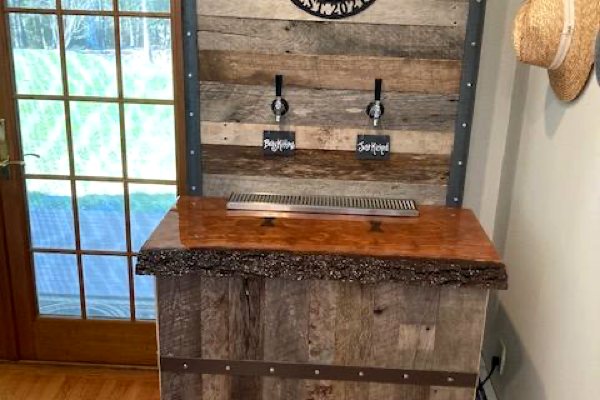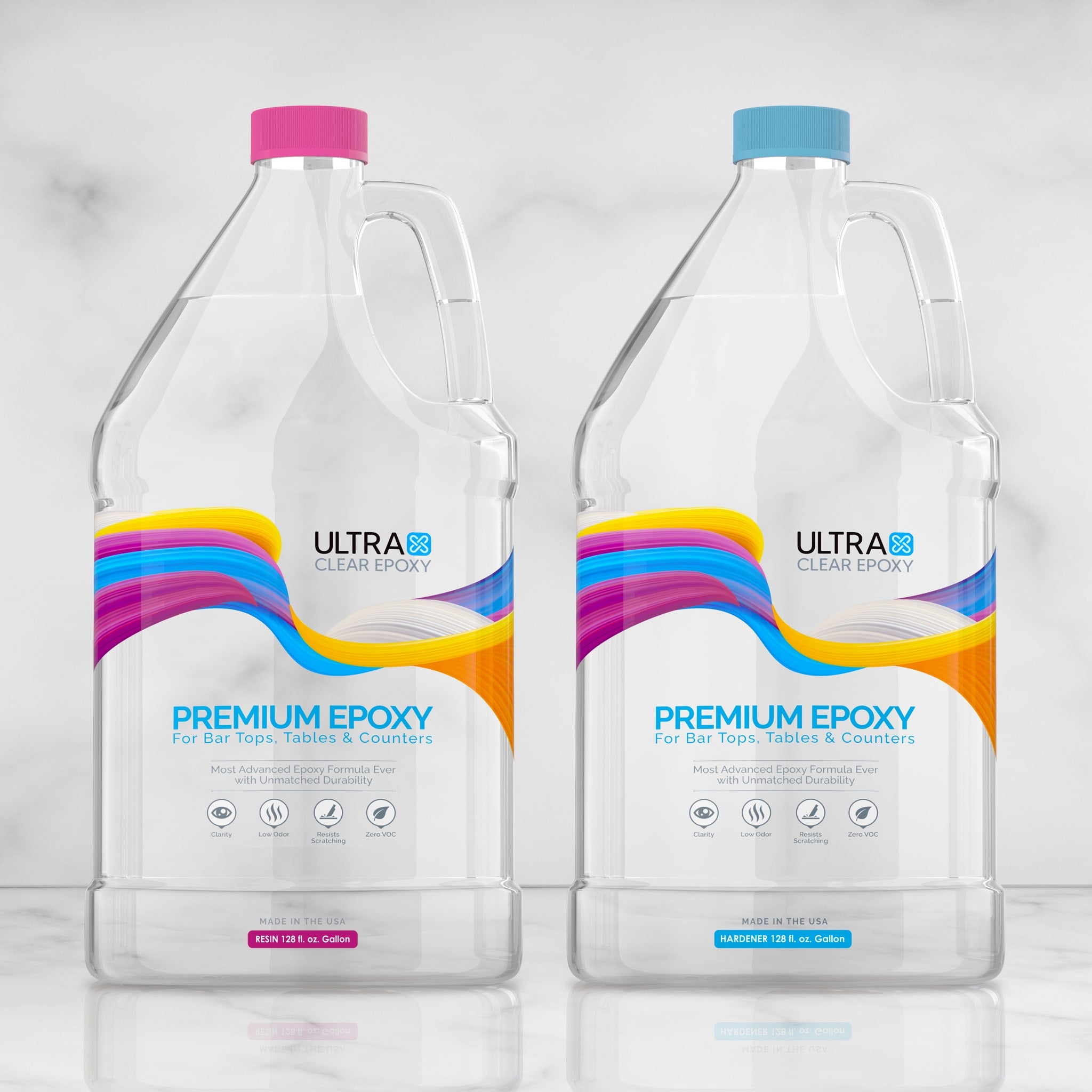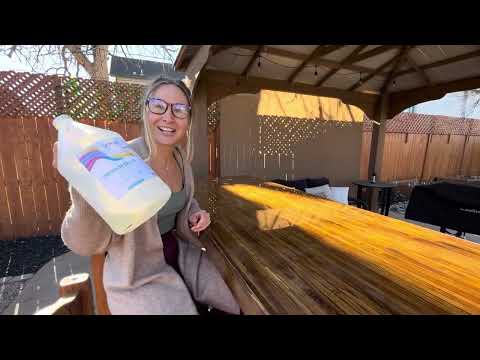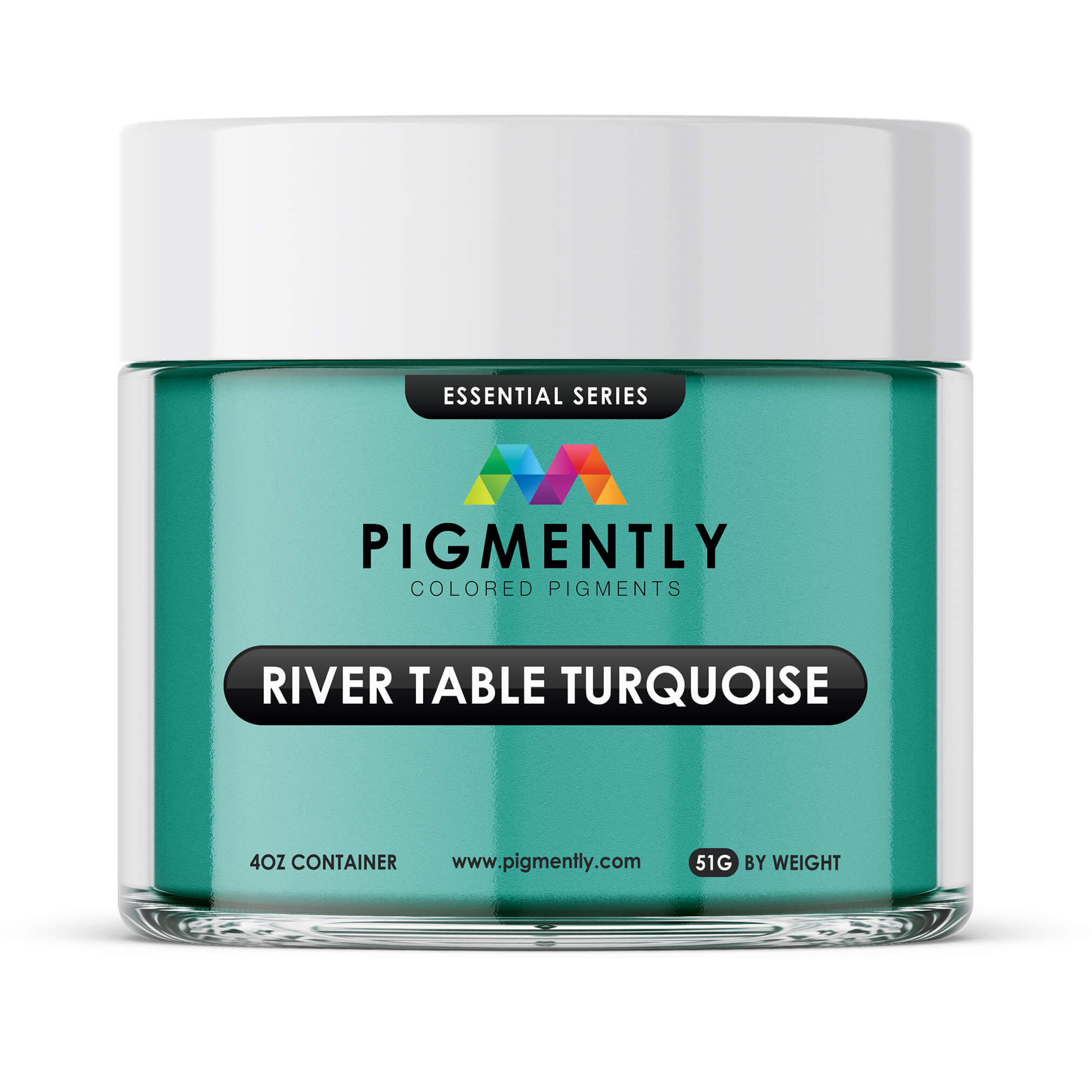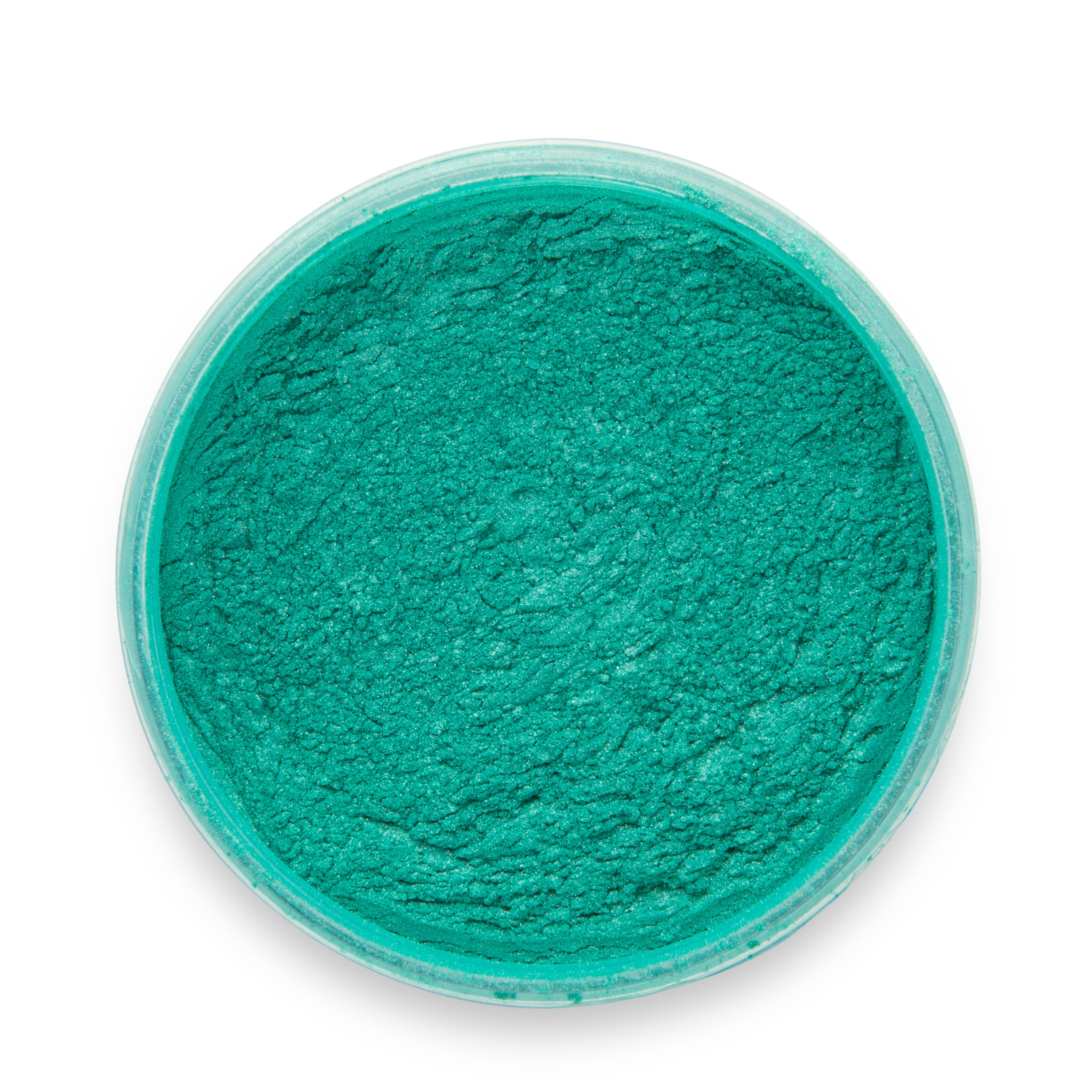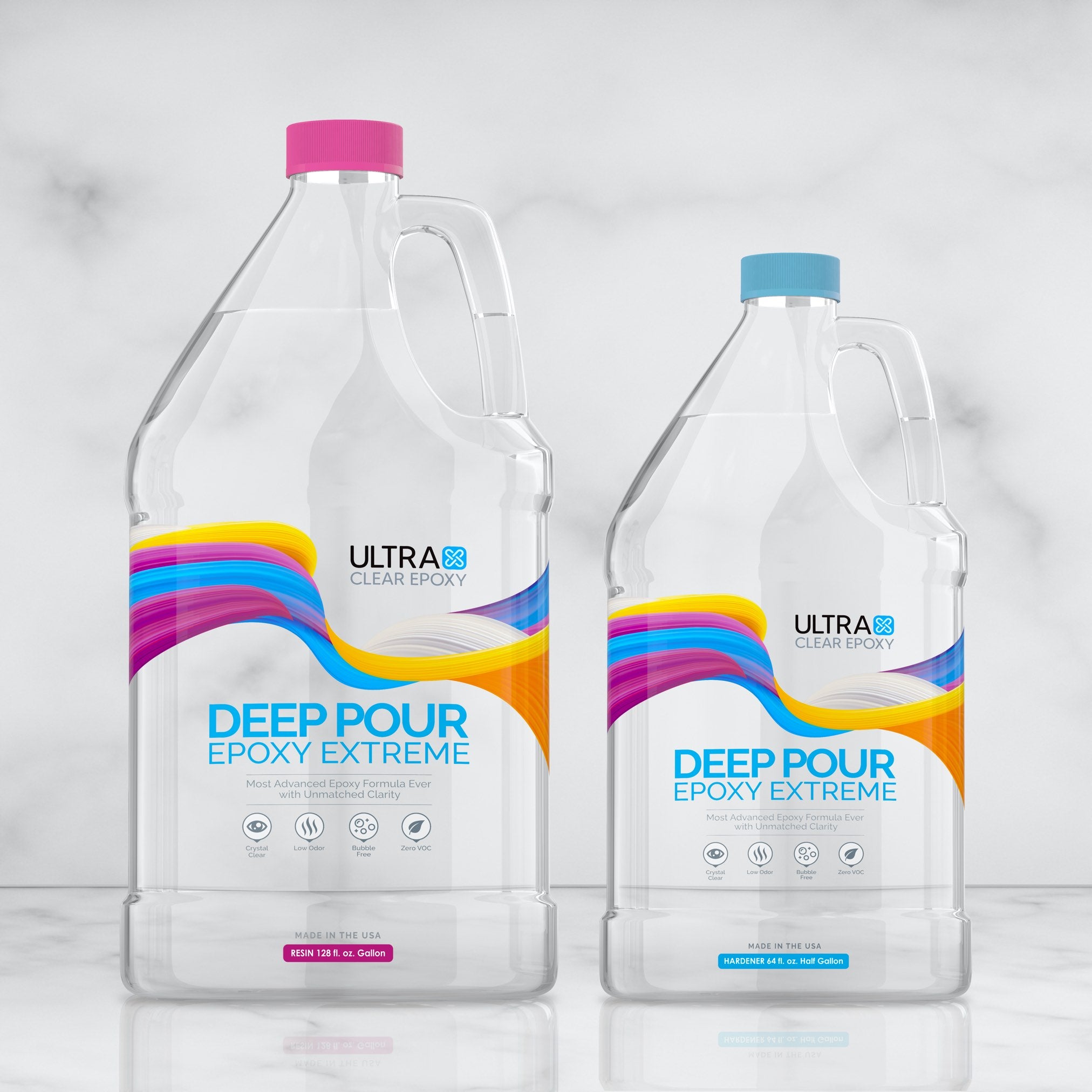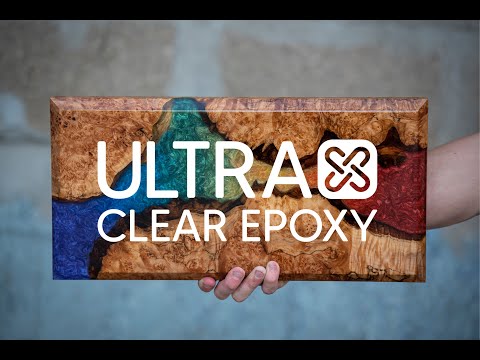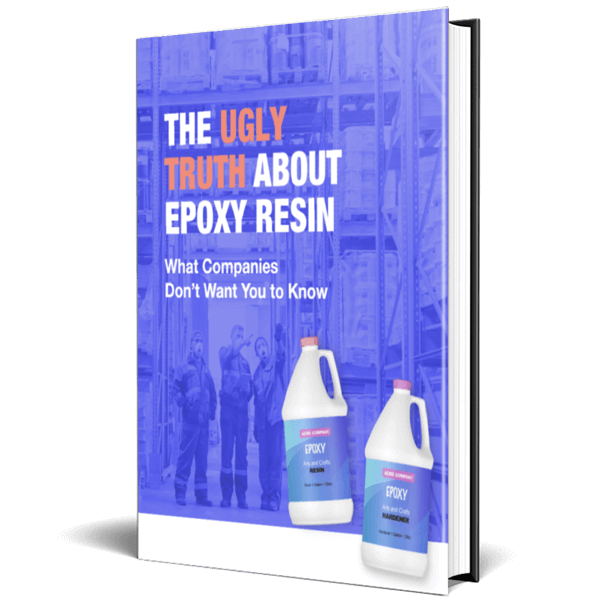Live-edge wood is a popular choice for bar tops and table tops, owing to its natural aesthetic that brings a certain charm and aesthetically pleasing comfort to any room it's in.
But because of the unusual shape of live-edge wood, it's often a little more difficult to work with. Whereas most tables and fixtures have smooth, sometimes rounded edges over which a coating of epoxy can be easily applied, live edges take a little extra nuance in their epoxy applications.
We've written about choosing the right epoxy for live-edge tables before, so in this article we'll now be answering a variety of common questions people have regarding live-edge epoxy projects.
Below are the questions we'll be addressing. You can jump to a specific question and answer by clicking on it.
FAQ #1: What is a live-edge epoxy table/bar top?
A live-edge epoxy table or bar top is one for which the natural edges of a wooden substrate are preserved, showcasing the unique grain, knots, and curves. Most projects of this type exhibit otherwise conventional forms, with only the outer edges of the table or bar top consisting of live edge wood.
However, it's not uncommon for any specialized project, such as a river table, to incorporate live edges as part of the interior aesthetic. In the case of a river table, multiple wooden slabs are positioned parallel with a live-edge gap in between, which gets filled with epoxy (typically Deep Pour Epoxy). This produces a striking visual effect that blends natural wood with a glossy, modern finish.
FAQ #2: How do I choose the right wood for a live-edge epoxy table or bar top?
The best wood for a live-edge epoxy table typically includes hardwoods such as walnut, oak, maple, or cherry. When deciding, consider the aesthetic traits of the wood. For instance, you might look for wood with interesting grain patterns, natural defects like knots or inclusions, and smooth edges.
Some users prefer a thick slab, which can allow for deep epoxy coats (usually 1-2 inches) for additional customization (such as adding embedments).
FAQ #3: How do I prepare the wood for epoxy application?
Start by sanding the wood to remove rough spots and to help the epoxy adhere better. Depending on the wood's condition, you might need to seal the edges with a thin coat of epoxy to prevent resin from soaking into the wood. Clean the wood thoroughly to remove dust or any debris before applying epoxy to ensure a clean bond.
Learn more about applying a seal coat of epoxy here.
FAQ #4: What type of epoxy should I use for a live-edge table or bar top?
To get the best results, UltraClear Bar & Table Top Epoxy is recommended for most live-edge tables or bar tops. This is the strongest type of epoxy, suited for commercial use (e.g., restaurants, bars) while also being DIY friendly.
For river tables, however, we recommend UltraClear Deep Pour Epoxy, especially for filling larger gaps and creating the river effect. Deep pour epoxy is designed for thicker layers (up to 2 inches) and allows for a controlled curing process. Once the river portion has been poured, you can finish with table top epoxy for a glossy finish.
FAQ #5: How do I prevent epoxy from seeping into the wood?
Because of its viscous nature and quick hardening, epoxy doesn't tend to seep deeply into wooden materials. Nonetheless, there are some measures you can take to satisfy any concerns.
To prevent epoxy from soaking into the wood, apply a seal coat of epoxy to the wood before pouring the main layer. This first coat seals the surface and helps the epoxy stay on top, not soaking in. You can also use masking tape or plastic sheeting to protect areas where you don’t want epoxy.
Discover the difference between three fundamental epoxy coating methods here.
FAQ #6: Can I add color to the epoxy for my live-edge table or bar top?
Yes, you can customize the look of your live-edge epoxy table or bar by adding pigments, dyes, or mica powders to the epoxy to create vibrant colors, or to mimic the look of water in a river table. Popular color choices include blues, greens, and even metallics. Ensure thorough mixing to avoid streaks or uneven coloring.
For advice on mixing epoxy perfectly, check out our guide!

FAQ #7: How do I prevent air bubbles in the epoxy during application?
Air bubbles often form during the mixing and pouring process. To minimize bubbles, mix epoxy slowly and carefully, and use a heat gun or torch after pouring to remove any air trapped in the resin. Hold the heat gun or torch a few inches above the surface and move it slowly to release the bubbles without overheating the epoxy.
We've written a guide to preventing or dealing with air bubbles. Check it out here.
FAQ #8: How thick should the epoxy layer be in a live-edge table or bar top?
Most live-edge projects, whether a table top, bar top, or something else, have a fairly conventional smooth, flat surface. For these, we recommend using UltraClear Bar & Table Top Epoxy, which self-levels to an ideal 1/8 inch thickness and conforms to any live edges around the perimeter. This thickness is perfect for achieving a crystal-clear, sturdy epoxy finish that can will hold up even in high-traffic areas such as commercial bar rooms or for family dining.
For river tables and similar projects, though, the epoxy layer often varies between 1/8 inch and 2 inches thick, depending on the size of the gap between the wood slabs. For the main pour of the river, deep pour epoxy is ideal, as it can fill deeper gaps without overheating—in fact, UltraClear Deep Pour Epoxy supports 2-inch pours and a total of up to 6 inches combined. Multiple layers may be poured if necessary, with each layer allowed to partially cure before adding the next.
FAQ #9: How long does it take for the epoxy to cure?
Epoxy curing times can vary depending on the type and thickness of the pour, but it generally takes 24-72 hours for the epoxy to fully cure. Deep pour epoxy may take longer to fully set, and environmental factors such as temperature and humidity can also affect curing time. It’s essential to let the epoxy cure completely before sanding or applying additional layers.
Avoid common curing mistakes—read our latest guide on epoxy curing technique!
FAQ #10: What should I do if I see imperfections or bubbles in the cured epoxy?
If you notice imperfections such as bubbles, scratches, or cloudiness after curing, you can sand the affected areas with fine-grit sandpaper, starting from a lower grit (around 120) and gradually moving to finer grits (up to 2000).
Once you’ve smoothed the surface, you can polish the epoxy to restore the glossy finish. If the imperfections are deep, you may need to pour a thin layer of epoxy over the surface to fix the issue.
Need to repair your epoxy finish? See our repair guide for methods on fixing different problems.
FAQ #11: How do I maintain the wood and epoxy once my live-edge project is complete?
To protect your live-edge epoxy table or bar top, regularly clean the surface using a soft cloth and mild soap and water. Avoid harsh chemicals or abrasive cleaners that could damage the epoxy. To prevent scratches, use coasters for drinks and avoid placing hot objects directly on the surface. You can periodically apply a wood conditioner to any exposed wood to keep it looking fresh and to maintain its natural beauty.
FAQ #12: How do I finish and polish a live-edge epoxy table/bar top?
After the epoxy has cured, you can sand the surface smooth with progressively finer grits of sandpaper. Once it’s completely smooth, use a polishing compound and a soft cloth to buff out any sanding marks and bring back the high-gloss finish. You may also apply a final thin coat of epoxy to give it a perfect, glossy finish, ensuring the epoxy is evenly spread before curing.
FAQ #13: Can I use live-edge epoxy tables for outdoor use?
While epoxy provides a durable, waterproof surface, live-edge epoxy tables should be used indoors or in well-protected outdoor environments. UV exposure and moisture can cause the epoxy to degrade or yellow over time. If used outdoors, consider applying a UV-resistant topcoat to protect the table from the sun and weather.
Choosing the right epoxy is essential to getting long-lasting results. Learn more here.
Have questions? Want advice? Contact us!
If you have any questions about live-edge epoxy tables or bar tops, or if you'd like assistance in planning an epoxy project, please reach out to us at UltraClear Epoxy—our epoxy experts are ready to assist!
You can contact us via phone or email here. During business hours, you can also text chat online with one of our resin specialists by clicking the Help button at the bottom of your screen.
In our online store, you'll find a variety of useful tools and supplies, ideal for resin projects, plus our award-winning UltraClear Bar & Table Top Epoxy and our UltraClear Deep Pour Epoxy.

